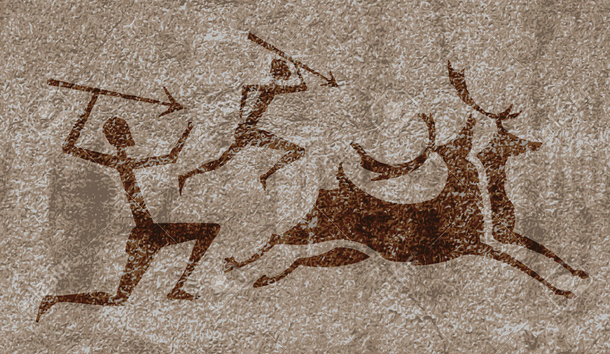Pick your starting point. Two, four, or six million years ago, it doesn’t really matter. Eons ago, several groups of advanced apes preceded us modern Homo sapiens. Around fifty thousand years ago one group left Africa and populated the rest of the globe. We are their descendants. Their survival and reproductive success depended on what they ate more than anything else. The groups that chose the wrong foods or couldn’t find the right foods failed to reproduce and died out. The groups that figured out what to eat survived, procreated, and became modern humans. The obvious question is what did they eat?
Early humans ate a wide variety of foods that included plants and animals from the entire spectrum of life on earth. Depending on what part of the globe they inhabited, the available sources of food were quite different. The foods that enabled our ancestors to survive and prosper were remarkably diverse. Groups living in different regions of the world relied on very different sources of nutrition. The question then becomes, was there a common theme among the successful groups? Yes, there was. A Dentist revealed the common theme in Mother Nature’s human evolution experiment to us in 1939.
Weston Price spent most of the decade of the 1930’s traveling the globe in search of stone age cultures that had not yet been influenced by modern agriculture and industrial food processes. He was able to find 14 such groups inhabiting parts of the globe ranging from the Pacific Islands, the Arctic Circle, Northern Europe, Central Africa, and remote places in between. He also found an analog for each of the 14 groups. The analogs for each of the groups were of the same genetic linage but had adopted modern diets. For example; a port city a few hundred miles away from the original stone-age group that because of global trade had adopted modern diets. As a dentist, his original intention was to study malformed teeth and tooth decay. However, after witnessing the many degenerative afflictions that besieged the analog groups he began recording all the physical differences. Today, it would be impossible to duplicate what Price was able to observe because there are no more groups living anywhere on earth whose stone-age diets have not been altered.
His findings were astonishing. Weston Price published his book, Nutrition and Physical Degeneration, in 1939. In the case of all 14 groups that still relied on their stone-age diets, there were no cases of malformed teeth or decay. In addition, there was no heart disease, type II diabetes, or any of the modern non-communicable diseases that afflict modern humans. In sharp contrast, all modern diseases and health ailments besieged the analog groups that had adapted modern diets.
What was the common theme among all the 14 groups? There are two. First, they all ate animal fat and protein. Vitamins A, D, E and K are most readily available in animal fat and animal proteins are the only source of complete protein. The sources varied wildly. A group living in central Africa ate insect larvae and cow’s blood. Groups living on the islands ate shellfish and other sea creatures. Eskimos ate whale blubber. Northern Europeans ate beef and cheese. It’s notable that there is no record of any vegetarian group ever succeeding.
The second and equally important common theme was that none of the 14 groups ate refined carbohydrate such as sugar and flour. As we now know, consuming refined carbohydrates cause inflammation, which leads to a whole host of metabolic diseases.
Price’s observations proved there is no one size fits all diet plan. Most importantly, he revealed the two common elements required of a successful nutrition plan. Consume animal fats and proteins and do not eat any refined carbohydrates. I’m not a big fan of labels but the current popular diet plans that are most in line with our evolutionary success are known as Paleo, Primal, and The Caveman Diet. For a complete nutrition and fitness program please pick up a copy of my book; Get Fit, Lean and Keep Your Day Job.
Yours in fitness,
JD

 RSS Feed
RSS Feed